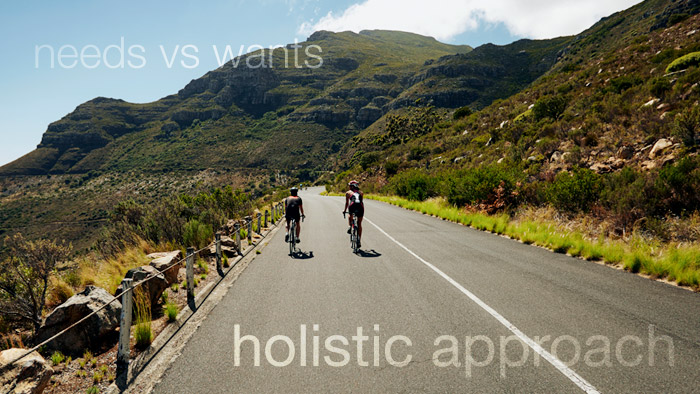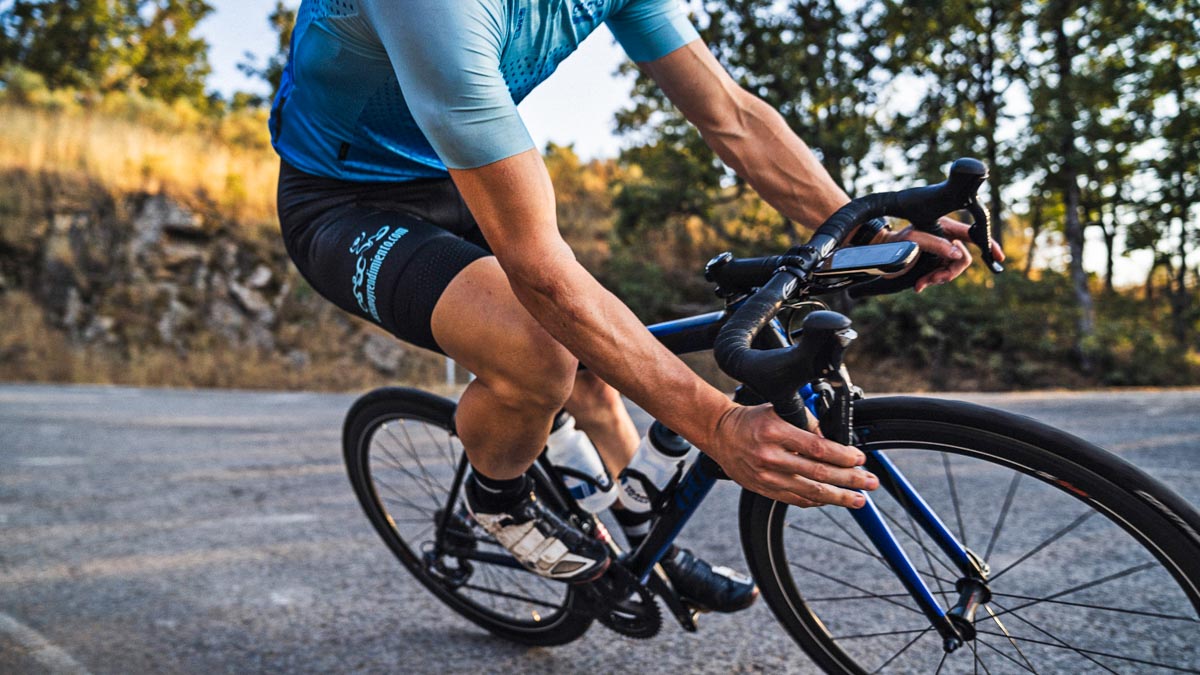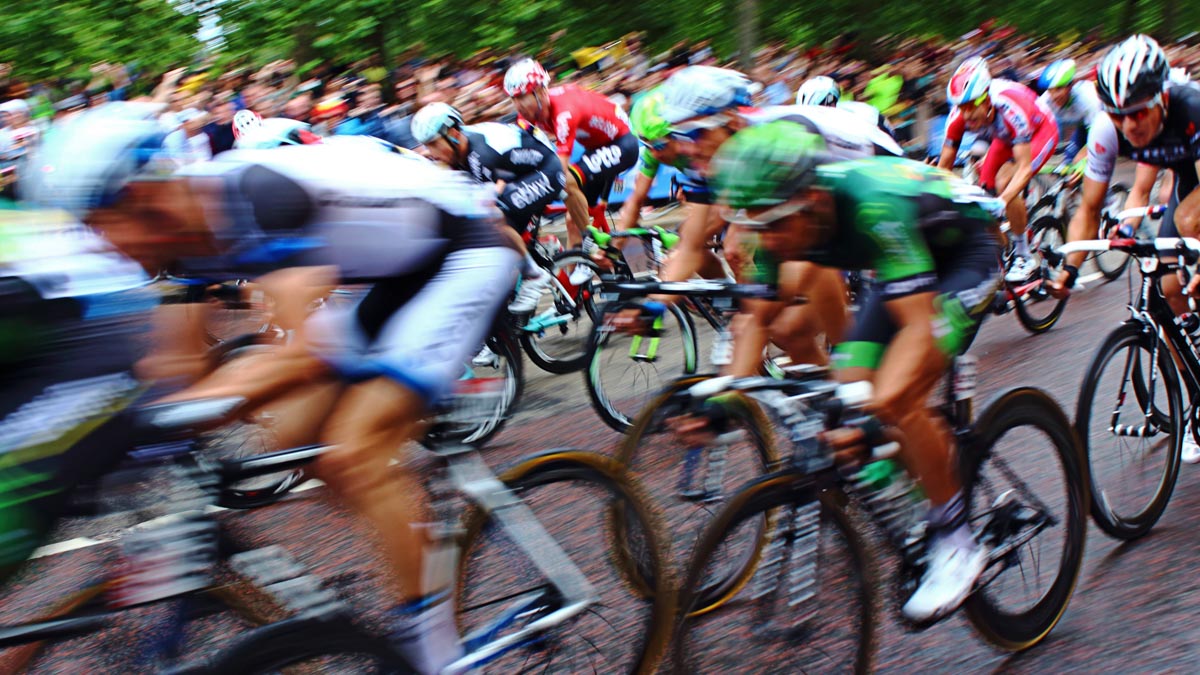It’s probably uncontroversial to suggest that the majority of injuries within triathlon come from running. This is easy to see anecdotally. Everyone knows a perpetually injured runner.
Coaches and athletes spend a lot of time thinking about how to avoid injury. One means of doing this more effectively is growing a solid understanding of the physical forces at play during the running action as these forces are often responsible for injury.
On top of this, understanding the running action in full can help optimize an athlete’s efficiency.
The Laws of Motion
In the 1600s Isaac Newton wrote down three laws of mechanical motion. These still apply today and they describe how, mostly, everything moves.
- An object moving at a constant speed stays at a constant speed unless a force is applied.
- Force is equal to the product of the mass and the acceleration.
- Every action has an equal and opposite reaction.
The Forces Involved
Consider a runner moving along a flat, paved road. They will feel resistive forces from gravity, friction and air resistance. These forces contribute to injuries as well as slowing the athlete down — so reducing them is in our interest.
Gravity: Healthy Weight Loss Is Key
Every step is a little jump up from one foot onto the other. Running physiologists use the term “vertical oscillation,” which is somewhat frustrating to a physicist as it’s not an oscillation.
This describes how high a runner goes off the floor with each step. Every time we leave the ground, it’s gravity which brings us back down. It is the force from gravity which dictates how hard we hit the floor with each foot-strike, which in turn dictates how much force muscles, tendons, ligaments and bones feel.
The gravitational force an athlete feels when running is based on two things — the local gravitational field and an athlete’s weight. Unless we can find a way to run on the moon, there’s not much we can do about the strength of the local gravitational field, but weight loss might be an intervention worth considering in certain cases.
A lighter athlete is more efficient, but this is only the case provided they are able to remain healthy. Energy availability is known to be associated with bone health, so making sure weight loss is done gradually during a phase of training with little or no run intensity is best.
Friction: Finding the Right Running Shoes
Friction is a kind of force produced between two surfaces in contact with one another. The relationship between friction and speed in running is not as simple as in cycling, where lower-rolling resistance is generally always better.
If that were true, we’d do all our running on ice rinks. Friction is good when running as it helps us transfer power to the floor more efficiently. It is, however, also one of the forces which tries to prevent us from leaving the floor due to contact between our shoes and the ground.
There’s a sweet spot between having enough grip for efficient power transfer and getting stuck to the floor.
Finding this sweet spot is all about shoe selection. This is important in both training and racing. In training, avoiding slips and rolled ankles can help an athlete avoid an acute injury.
From a racing perspective, making sure grip is sufficient to get traction is important. For example, you wouldn’t wear carbon fiber road racing shoes in a triathlon with an off-road run, especially if rain was in the forecast. This is because gains in efficiency from the carbon plate will be offset by slipping a little with each foot strike.
Air Resistance: Avoid Wind by Running in a Pack
We’ve all experienced a headwind and it’s quite unpleasant. Air resistance increases with the square of velocity.
This means if we run twice as fast, we feel four times as much resistance. If we run three times as fast, we feel nine times as much air resistance, and so on. Air resistance is the second biggest resistive force a runner will feel.
According to a study in the Journal of Applied Physiology, roughly 2% of a marathon runner’s energy goes to overcoming air resistance. This could convert to up to three and a half minutes for a three hour marathon runner.
Short of running in a Cathy Freeman style skinsuit, running in a pack is the best way to avoid the wind. This is more important if you’re a faster runner, as air resistance is proportional to the square of speed.
But if you can get yourself out of the wind in a running race — do it! Racing comes down to fine differences, and the 2% of energy air resistance uses can make all the difference.
An Extra Note on Running Cadence
A recent study published in Current Osteoporosis Reports shows that running cadence is related to efficiency and the likelihood of injury. Running cadence is also highly individual but, generally speaking, a cadence between 170 and 200 steps per minute is optimal for most runners.
If an athlete is struggling with bone stress injuries, then an increase in cadence is a low-risk intervention which could help. It can feel unnatural at first, and this is something I’ve done recently as an athlete, but you soon get used to it. It reduces the amount of loading through your legs with each step and reduces the risk of overstriding, hence reducing injury risk.
Conclusion: Consider a Physics-Based Approach
When deciding on a running-based intervention, whether it’s kit, injury avoidance or efficiency boosting, a coach should consider a physics-based approach.
By starting from a position of trying to reduce resistive force and aiming to improve an athlete’s propulsion, a coach can make interventions that are less intrusive and more effective.
When it comes to low risk and high reward interventions, an increase in running cadence is always a solid starting point, with many studies showing a higher cadence associated with running faster and getting injured less.
Physics is consistently working against us — whether it’s a headwind or gravity. Physicists, physiotherapists and physiologists have given us tools to overcome this in order to make the most of what we’ve got.







